Ideally we'd all have reusable shopping bags at our fingertips at all times, but in the real world that's not the case. So once you've brought your purchases home, what do you do with your plastic shopping bags? In most areas you can recycle them, but it's more practical (and fun!) to find ways to reuse them first. Here are a few of our favorite ways to get more out of those "single-use" bags.
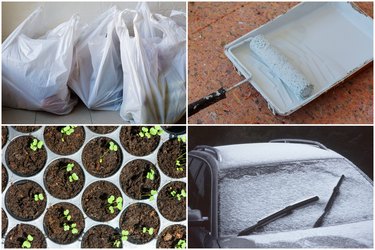
Video of the Day
1. DIY a Painter's Roller-Tray Liner
Home-improvement stores sell removable, disposable liners for paint roller trays. When you're done painting you just remove and discard the liner, and cleanup is a breeze. That's a great idea, but rather than spending money for another single-use plastic item, why not reuse your shopping bag as a tray liner? Just choose one the right size, slide your tray into it, and tie it in place. When you finish painting, discard it. Oh, and while that paint on your wall is wet, you can use another scrunched-up bag to give it an interesting, eye-catching texture.
Video of the Day
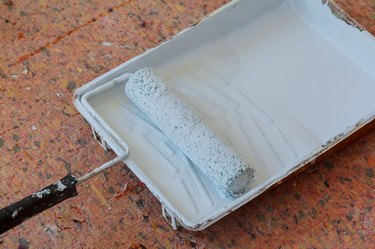
2. Winterize Your Car
If you live in a climate with cold winters, you already know how long it takes to get your car ready to drive on cold mornings. If you're lucky, there's just frost to scrape from your windshield and mirrors. On a bad day, a storm might leave them thoroughly caked in snow and ice, with your wipers frozen stubbornly in place. You can avoid this, and speed up your morning routine, by keeping a few plastic bags in your car. Tie them over your side mirrors at night, and slip another pair over your windshield wipers. Your mirrors will stay clear, and your wipers unstuck and undamaged.
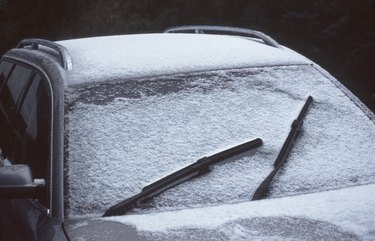
3. Wrap Brushes and Rollers So They Don't Dry
Most painting projects around the house will take several hours, and you'll probably want to take a break or two before you're done. That means either taking time to clean your brushes and rollers every time, or just leaving them out and hoping they don't get too dry while you're gone. Used shopping bags give you a practical third option. Just keep a few bags close to hand as you work, and when you need a break you can wrap your brushes and rollers in those. They'll stay usable for a few hours that way, giving you time for a meal, a rest or both.
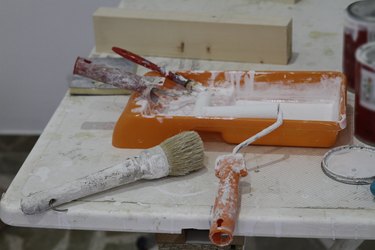
4. Protect Your Shoes From the Weather
Splashing in puddles is fun when you're a kid (even a big one) but puddles, snow and slush can really do a number on your shoes. Spray-on and rub-on coatings can be some help against the wet, but they can also discolor your shoes. Slipping your foot into a plastic bag, instead, is an utterly practical way to protect your shoes. Keep a few bags in your purse, backpack or car, and you'll never again squelch your way into a meeting or interview.

5. Free Packaging Supplies
Any time you need to pack fragile items, whether it's moving day or you're just getting ready to mail a gift, reach for your stash of plastic shopping bags. Scrunched-up bags absorb jolts just about as well as bubble wrap or foam peanuts, and you've already got the bags on hand. Newspapers and sale flyers are a widely used alternative, but plastic bags give better protection and won't transfer ink to the fragile items they're protecting.

6. Protect Your Plants From Frost
There's absolutely nothing like the smell of the air on a crisp, frosty morning. Unless you're a gardener, of course, in which case frost usually means dead plants. Commercial growers protect their crops from frost, seasonal or unseasonal, with row covers and "hoop houses." For home gardeners, a few surplus plastic bags will do the same job. Open them and place them over your delicate seedlings in spring, or your mature plants in fall, and anchor them against the wind by tying them in place or weighting them with rocks. They'll protect your plants from being killed by frost, and extend your growing season.
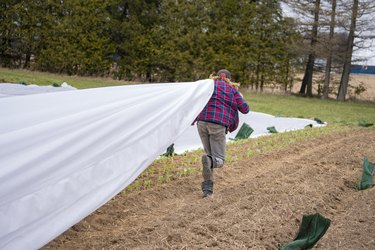
7. Create a Seed-Starting Microclimate
Frost isn't the only reason to make use of plastic bags in your garden. For several weeks before outdoor gardening season begins, you can use them to help start this season's seeds. Insert a chopstick or bamboo skewer in each corner of your seed tray to act as a frame, then lower a translucent plastic bag over the entire tray once it's planted. The bag acts as a mini-greenhouse, trapping warmth and moisture and protecting your infant plants from drafts and curious pets. Once they're well established, you can remove the bag and let them toughen up for transplanting.

8. Plastic-Bag Crafts
Plastic bags make a surprisingly versatile substitute for yarn or rope in DIY crafts. To make a yarn substitute, for example, lop the tops and bottoms from your bags, roll them up, and cut them into 3/4-inch loops. Join the loops end to end, you've got a tough plastic yarn ("plarn") you can knit, weave or crochet into thousands of projects. Tougher rope made from twisted and braided bags can be used for planters, hammocks, outdoor furniture or other heavier-duty DIY projects.
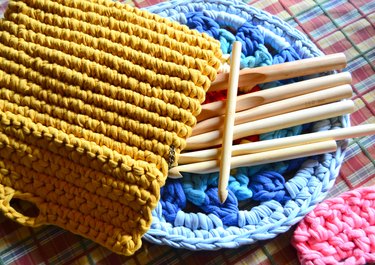
9. Upcycled, Non-Disposable Sandwich Wrap
One of the best ways to reuse plastic shopping bags is as a replacement for other disposable bags, such as sandwich bags. Cut 3 to 5 squares of plastic, 16 or 18 inches in size, from your shopping bags; then layer them between parchment paper and fuse them into a solid layer with your iron. Sew them to a colorful fabric backing, to make the basic wrap, then stitch Velcro to the corners (loops on two adjoining inside corners, hooks on the opposite outside corners) to keep them closed. Fold the finished wrap around your sandwich like an envelope, and lunch is good to go!

10. Stuff Pillows or Animal Toys
If one of your closets contains a plastic bag full of plastic bags, you already know they make a soft and squishy filling. So why not make use of them in DIY cushions and stuffed animals? You can pack them into oddly-shaped arms, legs or heads just as easily as you can with batts of commercial commercial stuffing, but the bags are free. Even better, the finished toys or cushions will be completely washable when they inevitably get soiled. Just don't put them through the dryer, where the heat can damage your filling.
